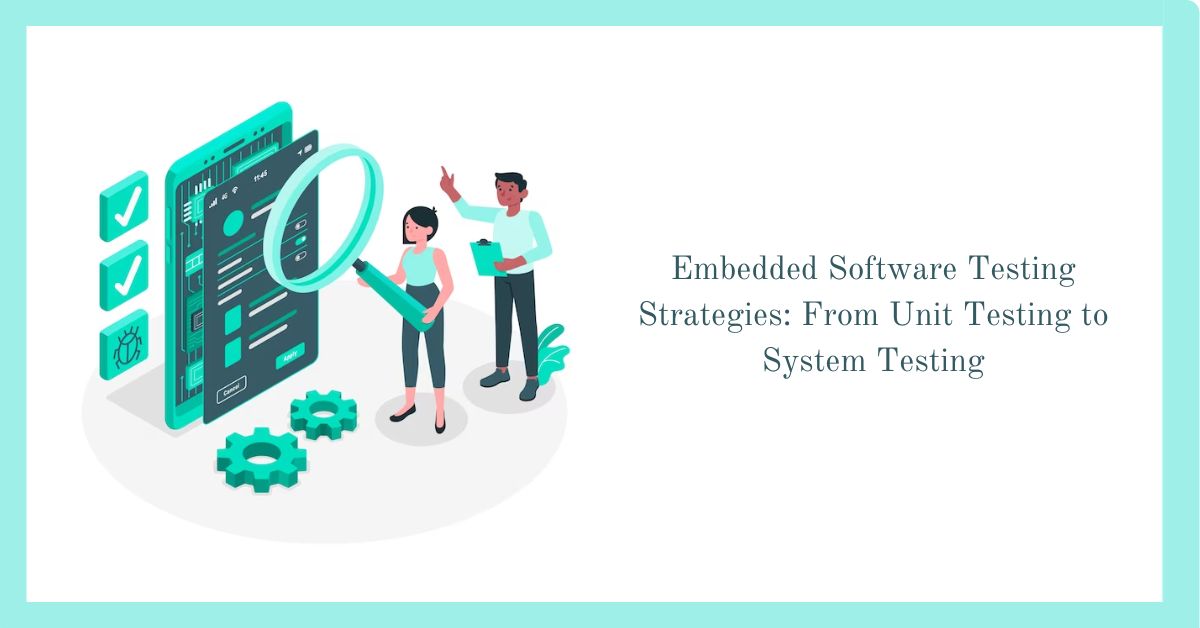Embedded systems power a vast array of devices we encounter daily, from smart thermostats to medical devices and automotive control systems. As these systems become more complex, ensuring their reliability and functionality becomes increasingly challenging. Effective testing strategies are crucial to guarantee the performance and stability of embedded software throughout its lifecycle. In this article, we’ll explore the key testing strategies, from unit testing to system testing, that contribute to the robustness of embedded software. Reliable embedded software development services play a pivotal role in implementing these testing strategies seamlessly.
1. Unit Testing: Building Block of Reliability
Unit testing forms the foundation of embedded software testing. It involves testing individual units or components of the software in isolation. This method ensures that each function or module operates as intended. By breaking down the software into manageable units, developers can identify and rectify errors early in the development process, minimizing the impact on the overall system.
2. Integration Testing: Ensuring Seamless Collaboration
Integration testing focuses on verifying the interactions between different units or modules. This step ensures that the integrated components work together seamlessly. Issues such as data flow, communication between modules, and compatibility are addressed, allowing for the early detection of integration-related bugs. PCB design services play a crucial role in ensuring the seamless integration of components by providing optimized layouts and connections for the printed circuit board.
3. Functional Testing: Verifying System Requirements
Functional testing evaluates whether the embedded software meets specified requirements. It examines the system’s behavior against the defined functional specifications. This testing phase aims to identify any functionality gaps, ensuring that the software behaves as expected under various conditions. Functional testing includes positive testing (valid inputs) and negative testing (invalid inputs) to cover various scenarios.
4. Performance Testing: Assessing System Responsiveness
Performance testing assesses the embedded system’s responsiveness, speed, and stability under different conditions. This includes stress testing to evaluate how the system handles extreme workloads, load testing to assess its performance under normal conditions, and scalability testing to ensure the system can handle increasing users or data. CAD drawing services are essential in optimizing the performance of embedded systems by providing accurate and efficient designs for the hardware components involved.
5. Security Testing: Safeguarding Against Threats
Security is paramount, especially in embedded systems that may handle sensitive data or control critical functions. Security testing identifies vulnerabilities and weaknesses in the software that malicious actors could exploit. This involves testing for encryption strength, authentication mechanisms, and resistance to common security threats.
6. System Testing: Holistic Evaluation of the Entire System
System testing evaluates the overall functionality and performance of the complete embedded system. This phase ensures that all components, when integrated, work together seamlessly. System testing includes functional, performance, and security testing, comprehensively assessing the software’s readiness for deployment.
Conclusion: Ensuring Embedded Software Resilience
In embedded software development, testing is not a one-time activity but an ongoing process. From the earliest stages of unit testing to the comprehensive evaluation of system testing, each phase contributes to the overall resilience and reliability of the software. Embracing a robust testing strategy not only identifies and rectifies issues early but also enhances the quality and longevity of embedded systems, ensuring they perform optimally in real-world scenarios. As the complexity of embedded systems continues to grow, so must our commitment to thorough and effective testing practices. Embedded Linux development services play a crucial role in implementing these testing strategies seamlessly.
